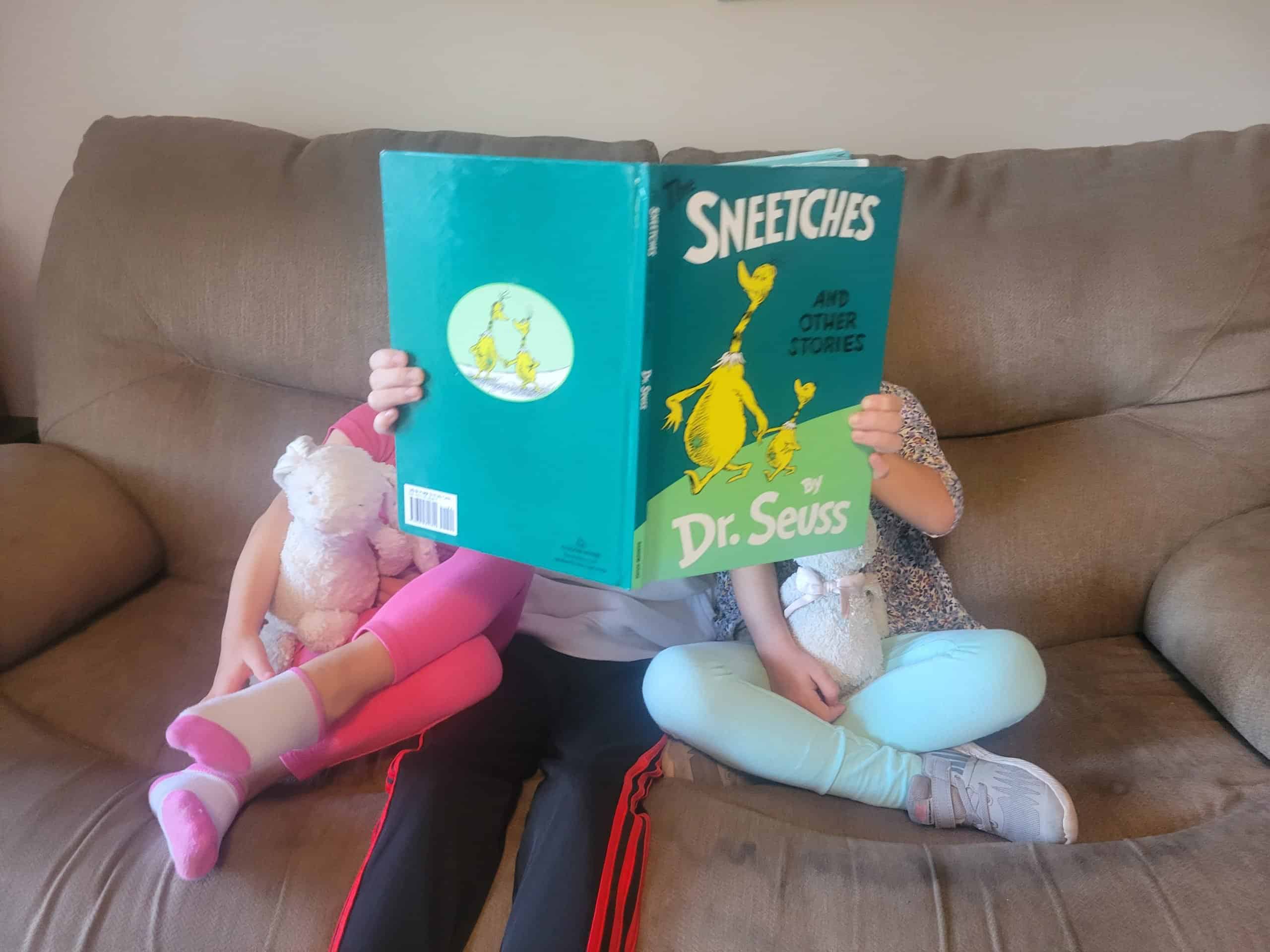Using Dr. Seuss’s “The Sneetches” to Teach Kids About Money
We love to read to our kids and teach them to read. (Admittedly, my wife does a much better job of it than I do, she’s great actually). There are several go-to books that I love to read them.
Dr. Seuss’ “Oh The Places You’ll Go” is actually the first book I read to my son. I like to think I am tough, but my eyes watered reading it to him.
Another Dr. Seuss book I love is “The Sneetches”. I don’t remember this book from when I was a kid, but it sure means something to me now. The last few times I’ve read it to my kids, I realized what a powerful book it is. (You can buy the book here)
This Seuss tale offers parents and educators a unique avenue to introduce children to important financial concepts. In this post, I’ll share my thoughts on how Dr. Seuss’ “The Sneetches” can be a tool to teach your kids about money.

Table of Contents
What Is Dr. Seuss’ “The Sneetches” About?
“The Sneetches” is a children’s picture book by Dr. Seuss. The story is set in a world inhabited by creatures called Sneetches, some of whom have green stars on their bellies, while others do not.
The star-bellied Sneetches consider themselves superior and refuse to associate with the plain-bellied Sneetches.
One day, a man named Sylvester McMonkey McBean arrives with a machine that can add stars to the bellies of the plain Sneetches, for a small fee.
Excited, the plain-bellied Sneetches pay and get stars added, making them indistinguishable from the star-bellied Sneetches.
In response, the original star-bellied Sneetches pay McBean to remove their stars, to maintain their uniqueness. This leads to chaos as Sneetches keep adding and removing stars, trying to outdo each other. Of course McBean profits all along.
Eventually, they run out of money, and McBean leaves, rich from the Sneetches’ foolishness. Exhausted and broke, the Sneetches realize that the presence or absence of a star doesn’t make any of them better than the others.
Consumerism and Materialism in “The Sneetches”
The story revolves around two groups of Sneetches: those with stars on their bellies, who see themselves as superior, and those without.
This sets the stage for a tale of inequality and unfairness, themes that are easily tied to real-world issues of consumerism and materialism.
Enter Sylvester McMonkey McBean, a character who exploits the Sneetches’ desire for societal acceptance by offering to put stars on the plain-bellied Sneetches’ bellies for a fee.
This leads to a cycle of spending, as Sneetches pay to gain or lose stars in an attempt to be part of the “in-group.” The Sneetches’ willingness to spend heavily on stars they don’t need is a clear reflection of the pressures of consumerism and materialism.
This aspect of the story can be used to explain to children the dangers of impulse buying and the importance of understanding the true value of their purchases.
It’s an opportunity to discuss how societal expectations and peer pressure can influence spending habits, often leading to poor financial decisions.
I even take it one step further. I tell the kids that the Sneetches with Stars and the Sneetches without Stars are both losing, and the only one benefiting is Sylvester McMonkey McBean.
It’s just like real life. So many people waste so much money trying to be like other people. Just be happy with being you.
Financial Implications of the Star-Buying Frenzy
The Sneetches’ star-buying frenzy has a significant impact on their financial wellbeing.
Despite their temporary satisfaction from acquiring stars, they are left financially drained. This scenario can be a practical lesson on budgeting and controlling impulse buying.
Valuable Financial Lessons from “The Sneetches”
In the end, the Sneetches learn that their wealth or possessions do not determine their worth. This is a powerful lesson that can help teach children that money is just a tool, not the ultimate goal.
This revelation encourages children to think critically about the role of money in their lives, shifting their focus from acquiring wealth to using it wisely.
I use “The Sneetches” as a springboard to discuss setting wise financial goals, the importance of saving, and understanding the difference between wants and needs.
I talk about, “Look these Sneetches could spend money on what makes them happy, but instead, they chase a never-ending cycle of trying to be someone else. Be happy with what you have, or you can never be happy.
It gives me a chance to teach them the definition of satisfice.
These discussions can help children develop practical skills related to budgeting and saving, equipping them with the tools they need to manage their finances effectively in the future.
The Benefits of Early Financial Education
Starting financial education early has numerous benefits. It empowers children to make informed decisions about money from a young age, fostering a sense of financial responsibility and independence.
Using stories like “The Sneetches” makes this learning process engaging and relatable, making complex concepts more accessible to young minds.
“The Sneetches” is more than just an entertaining read—it’s a valuable tool for teaching kids about money management.
By exploring its themes of consumerism, materialism, and the true value of possessions, parents and educators can help children understand and navigate the complex world of finance.
Engaging with Interactive Activities
One of the most effective ways to bring the financial lessons from “The Sneetches” to life is through interactive activities.
After reading and discussing the story, create a mock marketplace where children can practice budgeting and spending wisely. This hands-on experience allows them to apply what they’ve learned in a fun and engaging way.
They can pretend to be Sneetches, deciding whether or not to spend their money on stars. This activity can lead to discussions about wants versus needs, the importance of saving, and the potential consequences of impulse buying.
Teaching Financial Literacy Through Engagement
Instead of just reading the book to the kids, we explore it together. I pause at key parts of the story to ask my kids questions, encouraging them to think critically about the Sneetches’ decisions and the consequences of their actions.
A great way to deepen children’s understanding of the story and its financial lessons is to pose thought-provoking discussion questions.
For example, after reading the story, you might ask, “Why do you think the Sneetches were willing to spend all their money on stars?” or “What could the Sneetches have done differently to avoid losing all their money?”
These questions encourage children to think critically about the story and its implications, fostering a deeper understanding of the financial concepts the story explores.
We talk about other things the Sneetches could do with their money, like saving it for future needs or investing it in something that would benefit them in the long run.
These discussions have sparked some fascinating conversations about money and value, helping my children develop a deeper understanding of these concepts.
Making Real-World Connections
Tying the lessons from “The Sneetches” to real-world examples can make the story even more impactful.
Discuss how advertising and societal pressures can influence our desire to buy things we don’t need, similar to how McBean influenced the Sneetches.
You could also talk about the importance of saving and investing, drawing parallels between the Sneetches’ reckless spending and the consequences of not having a financial safety net in real life.
By making these connections, you can help children see the relevance of the story’s lessons in their own lives, reinforcing the importance of wise money management.
To buy The Sneetches, click here.


